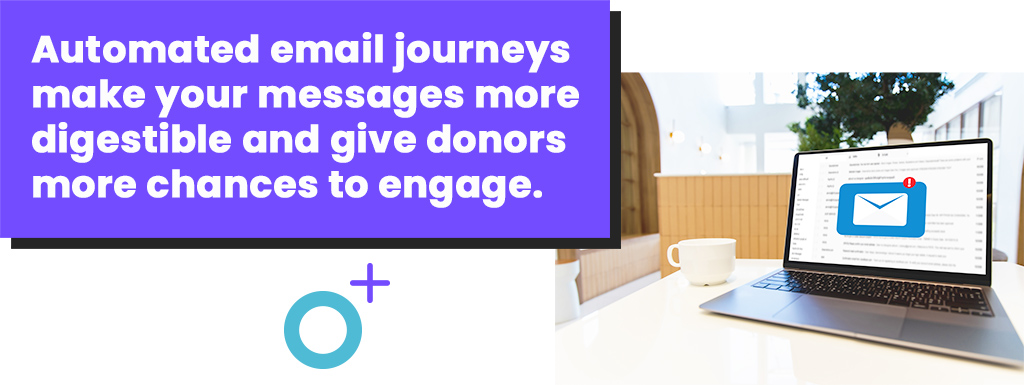It’s not hard to address someone by their first name. Jake from State Farm can do that!
Your school needs to do more than the electric company or an insurance provider when you apply the personal touch to your school’s fundraising outreach!
Your appeals and other outreach materials need to be much more than a solicitation. You need to make someone feel like part of your community and drive them to support your educational and financial goals.
So, start by looking at your fundraising outreach as a chance to provide someone with words and images that make them feel understood. You’ll need to reference personal information like where they live, their past contributions, and their relationship with your school.
Get your data in order.
Imagine sending a perfectly tailored message to alums who graduated in 2004, only to have it received by someone who was a parent of a current student, not even an alum.
Your message becomes irrelevant at best and offensive at worst when inaccurate data leads you astray. So, don’t use personalized strategies if you’re not sure the information in a given data set is accurate.
READ MORE: Is it time for a data audit?

Expand your audience segments.
You’re probably already using basic audience segmentation in your fundraising outreach. For example, you have audiences of parents who are prospective donors and top donors who you meet with in person.
But as someone who works in educational fundraising, we know you always strive for more. So, get ready to take it a step further once you’ve defined and built communications for your largest and most obvious audience segments.
For example, you can create a new segment for parents who have more than one child enrolled or previously enrolled at the school. Simply acknowledging this and using plural nouns in the new version lets the parents know you actually know who their family is.
And you can take this strategy as far as your data and budget allow. So, don’t be afraid to identify niche groups in your community and create communications that engage with them on a more personal level.
READ MORE: Better segmentation makes for better personalization.

Use automated journeys.
Your donor management system can likely help you create automated email journeys that trigger when someone completes a specific action. You may already have these set up to trigger a thank you response after someone gives through your online donation page.
Ready to take that a step further?
Set up a series of emails to send over time after someone registers for an event on your website. This way, you can keep them engaged with a drip feed of information leading up to the event rather than overwhelming them with one email that contains every detail and is soon forgotten.

PURLs extend the experience.
Printing personalized URLs (PURLs) on your direct mail materials, like reply cards and appeal letters, can lead supporters to customized web pages that feature the recipient’s name and other relevant information.
These pages function a lot like versioned print materials. They’re unique landing pages that make a better impression on specific supporters or audience segments by sharing stories and narratives that speak to them more directly.
PURLs can be scripted into emails or printed on any direct mailer.
They allow you to tailor the page with pre-populated information from your data files. And this enables you to personalize ask strings, specific copy, images, or layout based on who the user is to deliver a more individualized experience.
READ MORE: Personalized landing pages can elevate your outreach.
Weighing the costs.
Sure, it’s cheaper to send the same card to 15,000 prospects than 15 different cards to 15 segments of 1,000. But sending relevant messages to highly targeted audience segments will cut printing and distribution costs.
It’s all about using your data to send more powerful personalized messages to fewer, but more targeted members of your audience. It helps you invest your fundraising dollars more effectively and build stronger relationships with your community.
So, find the segment with the biggest potential return on investment and give it a shot! Consider costs, data availability, and timing to figure out where advanced personalization can make the biggest impact on your goals.
The key is to be strategic and maximize your results. So, start where you think you can make the biggest impact and expand from there.









